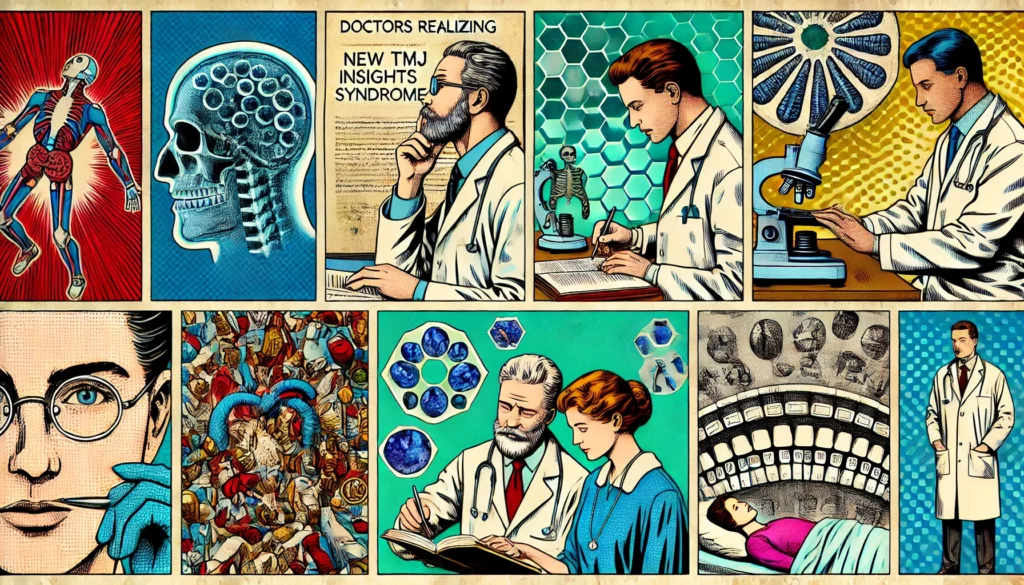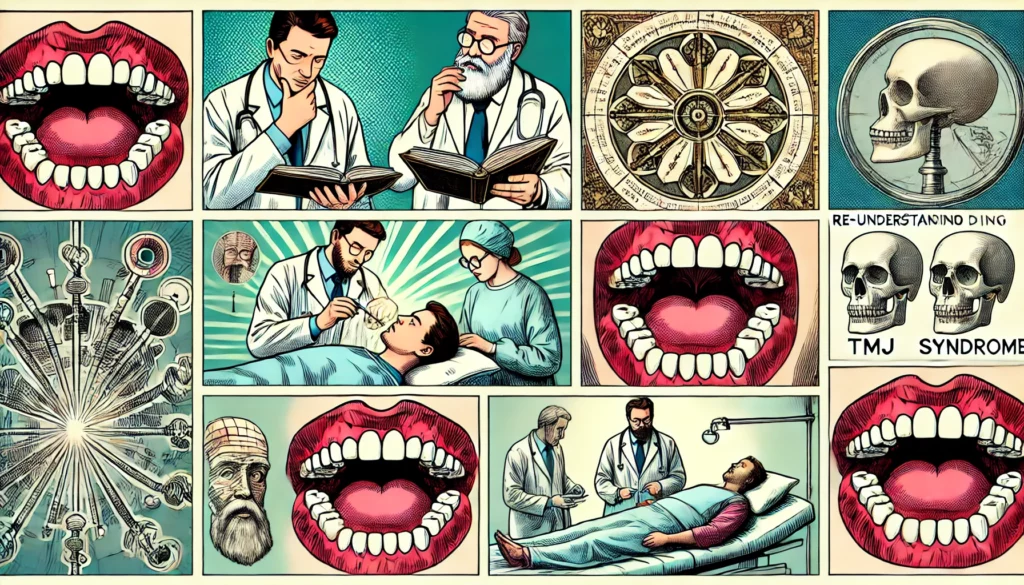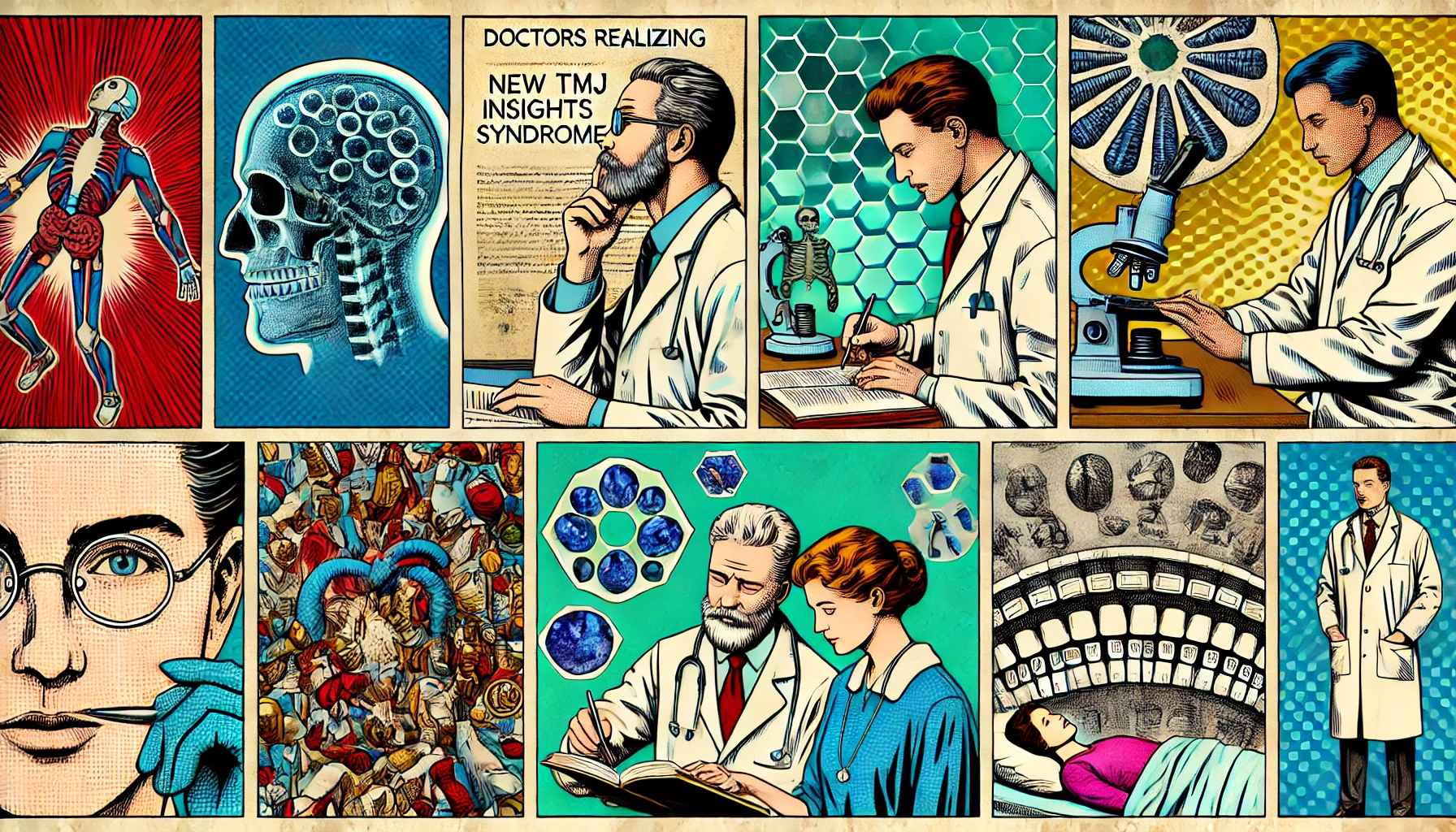“gaining piezo-electric charge via teeth-grinding is not something to subdue”
Reunderstanding TMJ Syndrome: A New Perspective on Healing Mechanisms
Temporomandibular joint (TMJ) syndrome has long been viewed through the lens of mechanical wear and tear, stress-induced grinding, and muscular tension. However, emerging research and theoretical frameworks propose a deeper, more intricate explanation involving the body’s innate healing mechanisms. This blog post explores the hypothesis that TMJ symptoms, such as grinding and associated pain, could be manifestations of the body’s attempt to facilitate healing through bioelectric processes.

The Piezo-Electric Effect: Nature’s Healing Potential
At the forefront of this reunderstanding is the concept of the piezo-electric effect. This phenomenon describes how certain materials generate electric potentials in response to mechanical stress. In the context of TMJ, the compression of teeth during grinding is hypothesized to create micro-voltages due to the piezo-electric properties of minerals within bone structures.
Dr. Jerry Tennant and the Role of Bioelectricity
Dr. Jerry Tennant, founder of the Tennant Institute, has pioneered research into the role of bioelectricity in healing processes. He suggests that the body operates on an intricate electrical system where disruptions or deficiencies can lead to various health issues. According to Tennant’s theory, the micro-voltages generated during TMJ-related activities might be akin to the body’s attempt to restore balance to its electrical circuits.
TMJ as a Mechanism of Electrical Circuitry
To delve deeper into this theory, consider the analogy of teeth as ‘circuit-breaker’ points within the body’s electrical network. Each tooth is connected to specific nerve pathways and meridian lines in traditional Chinese medicine, which are believed to correspond to different organs and systems. The micro-voltages produced during TMJ activities could potentially stimulate these points, influencing broader electrical flows and promoting self-regulation and healing.

Implications for Treatment and Further Research
Understanding TMJ syndrome through the lens of bioelectricity opens new avenues for treatment and management. Rather than focusing solely on mechanical interventions such as night guards or stress reduction techniques, therapies could target enhancing the body’s electrical balance. This might involve nutritional support to optimize mineral levels crucial for piezo-electric effects or innovative bioelectric therapies aimed at restoring proper electrical flow.

Conclusion
In conclusion, reexamining TMJ syndrome as a bioelectric phenomenon offers a compelling perspective on the body’s innate healing capabilities. By considering the piezo-electric effect and the role of minerals in bone health, alongside Dr. Tennant’s insights into bioelectricity, we begin to see TMJ symptoms not merely as mechanical nuisances but as potential signals of a deeper healing process. This paradigm shift invites further exploration and integration of bioelectric principles into both the understanding and treatment of TMJ and related conditions.
This blog post aims to provoke thought and inspire further inquiry into the fascinating intersection of bioelectricity, dental health, and holistic healing approaches. As research progresses, the potential to harness the body’s natural electrical currents for therapeutic benefit holds promising implications for the future of TMJ care.
References:
- Jerry Tennant, Tennant Institute
- Piezo-electric effect and its application in biomedicine
- Traditional Chinese medicine meridian theory
